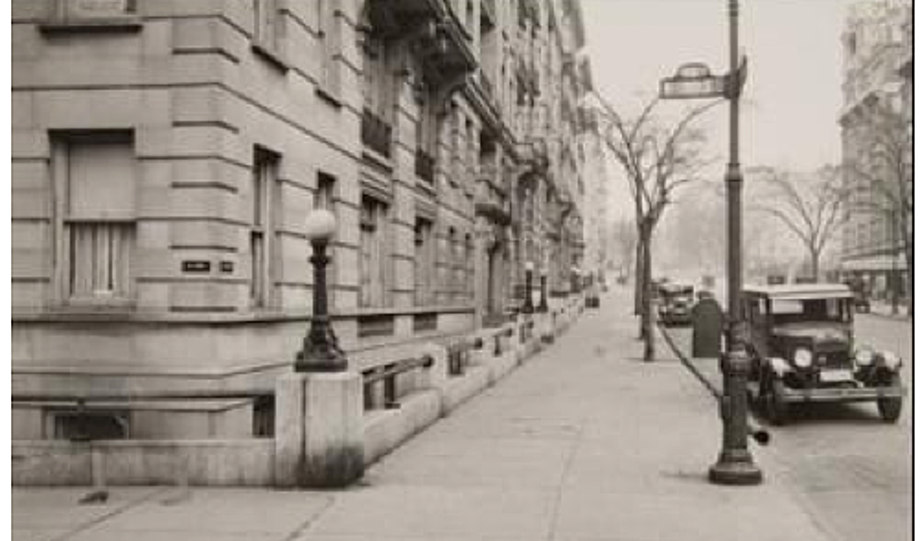
History of the Pinehurst
In 1908 the Pinehurst welcomed its first tenants. Monthly rent cost from $38 to $100 (adjusted for inflation, that’s a monthly rent of $1,309 to $3,446 in 2023). The first residents enjoyed parquet floors, many of which remain today,
oak-panelled dining rooms, and dumbwaiters, so their purchases could be delivered directly into their homes. Gas lights illuminated their apartments and the halls, and apartments facing south and
west had views of the Hudson River.
 Pelham's original floorplan included five apartments per floor. (Click the photo for a larger version.)
Pelham's original floorplan included five apartments per floor. (Click the photo for a larger version.)
The earliest known advertisement for the building, from 1908, indicates that the Pinehurst Realty Company managed the property, as well as its northern neighbor, the Chislehurst, which has a similar façade but an entirely different floor plan.
For heat and hot water, the building’s porters shoveled coal into the
boiler. Today the coal room, off the courtyard, is used for building storage. (The boiler, long since replaced, now burns oil.)
In the basement, the southernmost area had a sign over the doorway labeling it the Drying Room, where residents’ staff hung clothes after washing them. Even though automatic dryers (and washers) had been introduced in 1907, they wouldn’t become commonplace until much later. Today storage cages fill the space, so residents can keep the belongings safe and keep them from clogging their homes. Bicycle racks provde a convenient and secure place to keep tire tracks out of residents’ hallways. Both are availble to rent.
References to the building have appeared in The New York Times over two centuries. In one, an apartment whose renovation was overseen by Frank Gehry was profiled and photographed in 2011.
Much earlier, as the neighborhood was being developed in 1909, The Times detailed how The Pinehurst, Chiselhurst and our nearby neighbors were built on land owned by Henry Morgenthau. He was the president of a real estate firm named Fort Washington Syndicate, which wound up its business with the sale of the property on April 21.
Referring to the area between Broadway and the Hudson, and 177th and 181st, as the Fort Washington District, the paper noted the transformation of “this whole region from a quiet little community of homes into part of the great rapidly growing apartment house district of Washington Heights.” The article includes a grainy photo of The Pinehurst, right.
Later, on October 18, 1921, the paper reported on an accident in Boston, in which a woman whose father lived in “the Pinehurst Apartments” fell out of a window. She survived.
Pelham, the architect, designed the building to minimize distractions from its formal look, building niches for the fire escapes on the street sides
of the building to visually hide them. In the 1950s, when the owner divided the 11-room apartment on the south side of each floor into three apart-ments, fire escapes had to be added to the exterior
and courtyard of the building.
The bay windows in the lobby were filled with stained glass until the 1970s, when they were irreparably damaged. Stained glass also hung in the windows nearest the elevator on each
floor until they, too, fell into disrepair.
The building remained a rental property until July 1985, when the landlord sold it to the residents who created the co-operative corporation, an idea first launched in New York
by Finns in 1916 in Sunset Park. These days, Pinehurst owners occupy nearly all the apartments and make the
decisions about its future. One of them was to re-adopt its original name, the Pinehurst, in 2006 after reviewing historical documents in the New York Public Library.
During the centennial year of The Pinehurst, we asked the renowned British stone carver Simon Verity to add our construction year to the stonework of the building, creating a cornerstone. His carving is duplicated above, with the centennial year added by New York type designer Troy Griggs.










